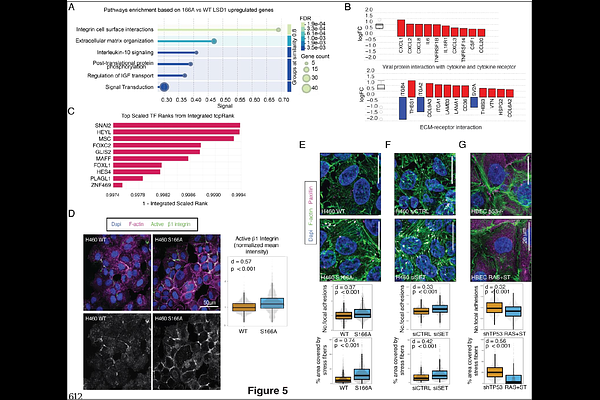LSD1 serine 166 is a phosphorylation switch for chromatinlandscaping, gene activation, and tissue remodeling

LSD1 serine 166 is a phosphorylation switch for chromatinlandscaping, gene activation, and tissue remodeling
Sharma, M.; Aakula, A.; Denisova, O.; Ceccacci, E.; Hayatigolkhatmi, K.; Caroli, J.; Natkin, R.; Laisne, M.-C.; Huhtaniemi, R.; Ghimire, S.; Merilahti, J.; Noberini, R.; Kamila, J.; Kauko, O.; Mattevi, A.; Bonaldi, T.; Jacquemet, G.; Nykter, M.; Minucci, S.; Westermarck, J.
AbstractLSD1 is a histone 3 (H3) demethylase that can either repress or activate gene expression. We discover here that the so far enigmatic balance between these two activities in non-hormonal cancer cells is regulated by phosphorylation of serine 166 (S166) on LSD1. SET-mediated Protein Phosphatase 2A (PP2A) inhibition in KRAS mutant cells promotes S166 phosphorylation. Endogenous LSD1 S166 alanine mutant (S166A) cells display H3 lysine 9 demethylation and acetylation, euchromatin, and gene activation. Mechanistically this is explained by the impaired interaction of S166A mutant LSD1 with repressor proteins SNAI2 and MYBP1. Functionally LSD1 S166A mutant cells display augmented beta1 integrin activity and stress fiber formation, and the mutant xenograft tumors have altered tumor microenvironment associated with increased macrophage recruitment. Collectively, PP2A-regulated S166 of LSD1 is a phosphorylation switch for epigenetic gene activation in non-hormonal cancer cells. Conceptually we demonstrate how dephosphorylation of one amino acid on a non-histone protein shapes chromatin landscape in cancer cells, and modify tumor stroma, and immune cell content.